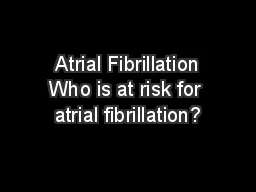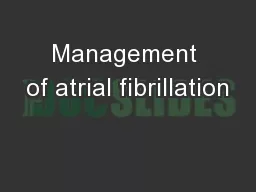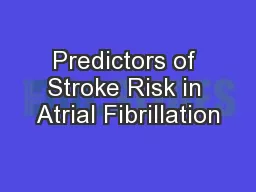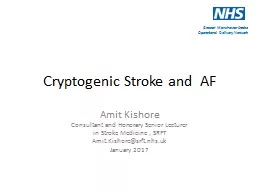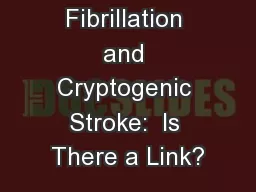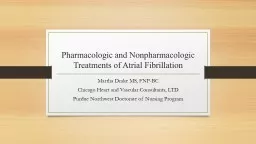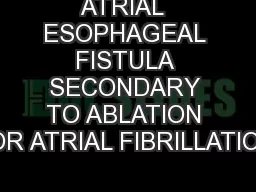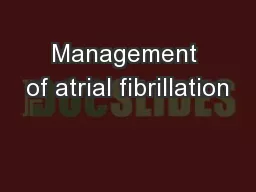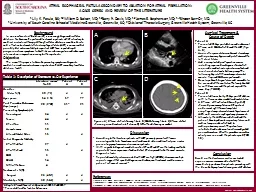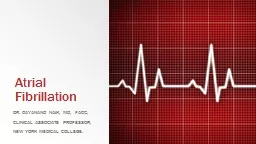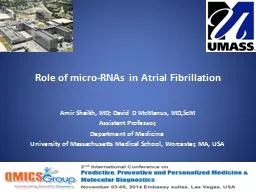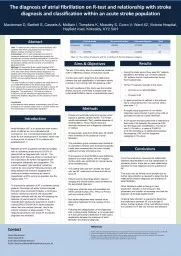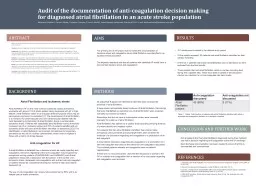PPT-Atrial Fibrillation Who is at risk for atrial fibrillation?
Author : tatyana-admore | Published Date : 2020-04-03
lt1 of individuals aged 60 to 65 years 8 to 10 of individuals aged gt80 years Men more than women White persons more than black persons Presence and severity
Presentation Embed Code
Download Presentation
Download Presentation The PPT/PDF document " Atrial Fibrillation Who is at risk for ..." is the property of its rightful owner. Permission is granted to download and print the materials on this website for personal, non-commercial use only, and to display it on your personal computer provided you do not modify the materials and that you retain all copyright notices contained in the materials. By downloading content from our website, you accept the terms of this agreement.
Atrial Fibrillation Who is at risk for atrial fibrillation?: Transcript
Download Rules Of Document
" Atrial Fibrillation Who is at risk for atrial fibrillation?"The content belongs to its owner. You may download and print it for personal use, without modification, and keep all copyright notices. By downloading, you agree to these terms.
Related Documents

